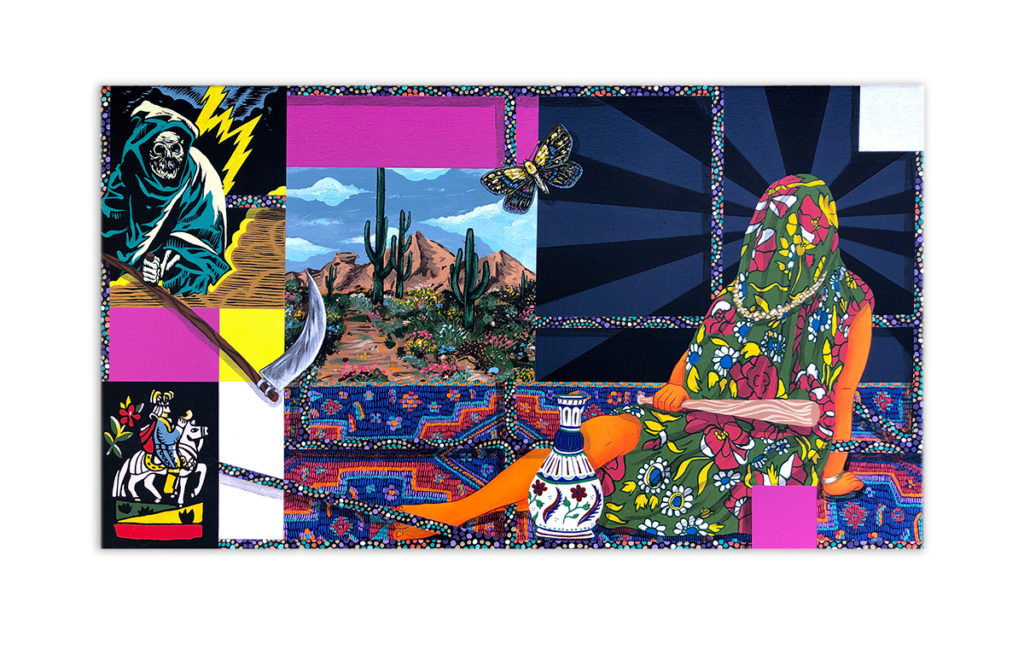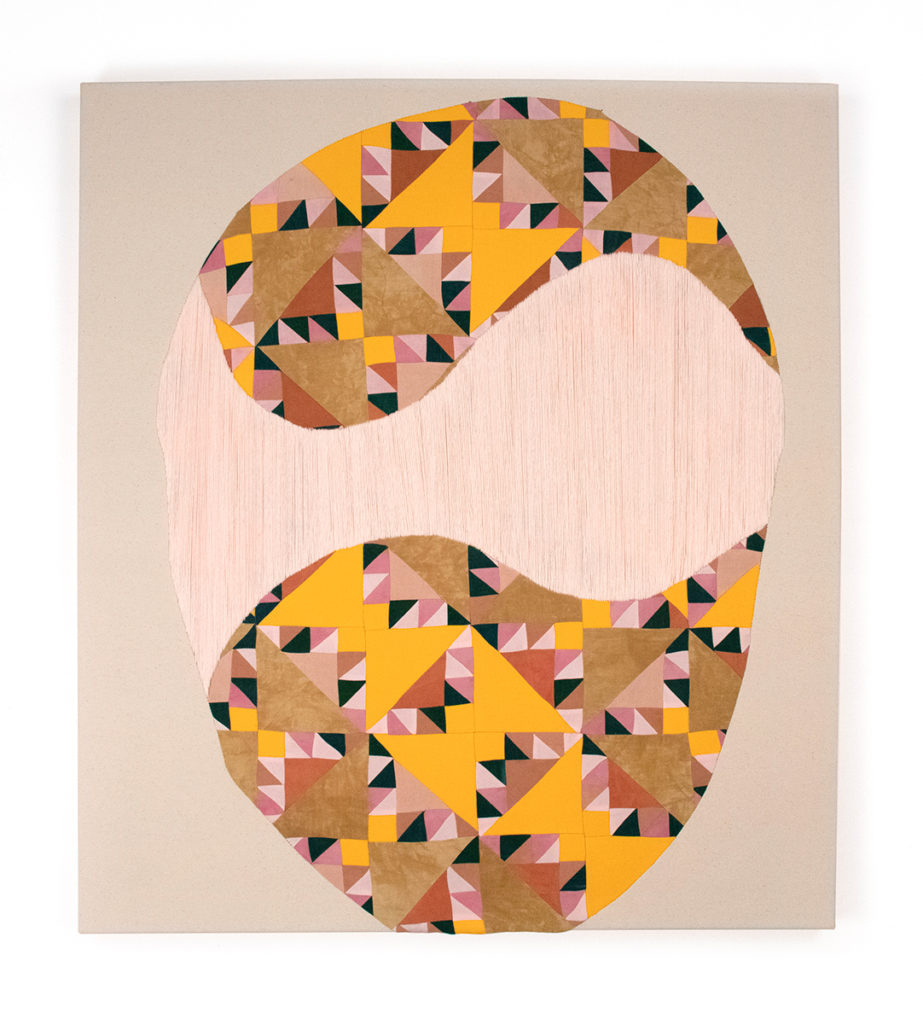
Ruling families of the Renaissance, such as the Medici, exerted their influence through political intrigue, war and art, as can be seen in The Met’s presentation of The Medici: Portraits & Politics 1512-1570. American high culture, a construct of large institutions, mostly white, endowed by the wealth of corporate donors, also mostly white, is undergoing a radical shift, as consumers are beginning to exert their power to press for better representation of the publics that make up that body of consumers. Above: Amir H. Fallah, Reap What You Sow, 2021; Acrylic and canvas; courtesy of the artist and Denny Dimin Gallery, NY
While decolonizing and occupying actions have been on the scene for a number of years, notably present at the 2017 Frieze NY art fair, it was the Whitney’s so-called “Tear Gas Biennial” of 2019, which ultimately led to the ouster of Warren Kanders from its board, that marked a turning point. And with months of weekly demonstrations led by the International Imagination of Anti-National Anti-Imperialist Feelings designed to expose the “unscrupulous sources of wealth” at MoMA this spring [info], it has becoming increasingly evident to the encyclopedic museums that whatever they choose to build will not necessarily get them to come.

This became sharply evident in an announcement from Denny Dimin Gallery that hit my inbox last Wednesday. Co-founder Elizabeth Denny has reached back about 50 years to study a seismic shift in the New York art scene that accompanied the woman-led Pattern and Decoration [P & D] movement, and explore how it has come to bear on post colonial contemporary art with an exhibition of works by 13 artists, titled Fringe.
In her text she writes, “The [Pattern & Decoration] movement’s privileging of materials such as textiles and ceramics, its promotion of female artists, and its interest in domestic space as a place for creativity, all connect it strongly to the concerns of contemporary artists half a century later.
“P & D exalted the artists, mediums, cultures, and aesthetics the then current artworld snubbed. It sought out what was on the periphery, on the fringe of mainstream and turned it on its head. The references to fabric design, quilting, stained glass, manuscripts, textiles, pottery, mosaics, embroidery and most non-Western Art, continue to proliferate in the works of contemporary artists and upend traditional art historical narratives.
“One radical element of P & D was its commitment to unveiling the realm of the domestic. Private life could become public art. Pattern acted as a visualization of the repetition of daily life. Its unabashed presentation of mundane daily labors [such as] sewing, floral arrangement, sitting and drafting from the kitchen table, have never been more relevant than from our present moment, when our domestic routines have become all encompassing, endless, and unprecedentedly challenging. Many artists have had no choice but to embrace the kitchen table as art studio.”

In a phone conversation, I asked Denny what prompted her to mount the exhibition at this very moment. She replied,
“I was prompted to organize Fringe, a group exhibition inspired by the Pattern & Decoration movement, because I believe that the movement’s legacy has been the acceptance of its radical tenets- privileging the decorative, championing the work of women artists, exploration of craft materials such as textiles and ceramics—into the mainstream of contemporary art.
“Many artists in Denny Dimin Gallery’s program have been significantly influenced by the movement (i.e. Justine Hill, Amanda Valdez, Amir H. Fallah, Future Retrieval, and Pamela Council). It was actually P & D original Cynthia Carlson who lit a fire under us to do the show now, after it had been on my mind for years, by pointing out that the seminal Pattern and Decoration show curated by Anna Katz would be traveling to Bard’s Hessel Museum of Art this summer. [Cynthia Carlson, Ree Morton, and Valerie Jaudon feature in both exhibitions.] I also wanted to explore how some artists have complicated the gender identities of craft and how artists of diverse backgrounds have brought other important histories into their work, enriching the dialogue around the ideas of P & D.”
Fringe, with works by Amanda Valdez, Amir H. Fallah, Future Retrieval, Justine Hill, Pamela Council, Natalie Baxter, Cynthia Carlson, Max Colby, Valerie Jaudon, Judy Ledgerwood, Ree Morton, Josie Love Roebuck, continues through August 20 at Denny Dimin Gallery; 39 Lispinard Street, NY, NY.
